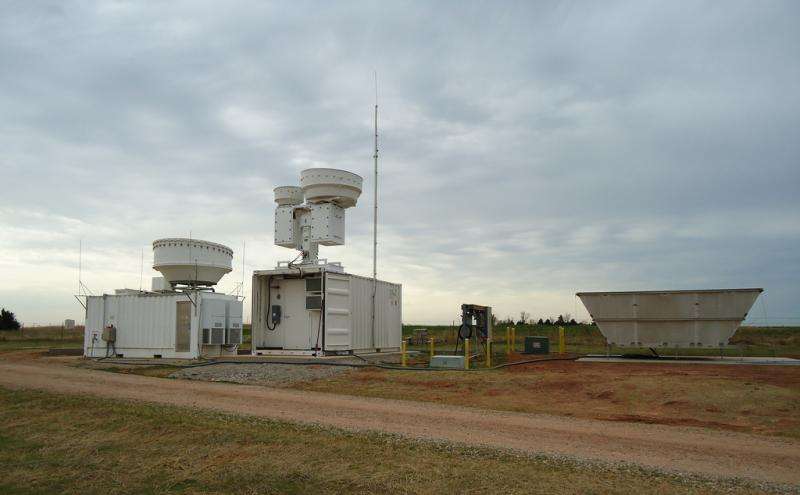World's largest climate research site pilots integrated modeling

The next generation of equipment is coming to the world's largest climate research facility, the Southern Great Plains (SGP) field measurement site near Lamont, Oklahoma.
Managed by scientists at the U.S. Department of Energy's (DOE) Argonne National Laboratory, the site will see four profiling modules and two new radars installed by September 2016. The instruments will soon support integrated modeling of clouds, aerosols and the earth's surface. Rather than examining these factors in isolation, SGP scientists are interested in probing coupled interactions, which will advance research in a variety of fields—from climate change, to meteorology, to agriculture.
For example, a better sense of the interplay between variables like soil, hydrology and atmospheric radiation could shed insight on what causes droughts and other complex, extreme weather events.
The SGP is the most extensive field measurement site of the Atmospheric Radiation Measurement (ARM) Climate Research Facility. As a DOE Office of Science User Facility, ARM collects high-quality data to serve a broad community of researchers.
The four profiling modules will be added to existing extended facilities at the SGP to measure temperature, relative humidity and winds. The two new radars will be deployed away from the central facility, from where they can tilt and scan the site at different angles to collect more thorough data.
"What we want to do now is expand the SGP facility in a very thoughtful and scientific way to support model development," said Nicki Hickmon, operations and program manager for the ARM Field Program.
The new infrastructure will provide some of the necessary measurements for integrated modeling.
A pilot study is underway at the site to develop the framework for a routine Large Eddy Simulation scale model, a consolidated way of looking at data that will pull together new observations and existing measurements.
This type of integrated modeling could benefit scientists from all fields who access SGP measurements in the ARM archive. Climate researchers, for example, need a cohesive perspective on different types of data in order to make sense of droughts—a hot topic in the realm of climate change.
Understanding any precipitation patterns—and especially extreme ones—requires a multifaceted analysis. Cloud cover influences the amount of energy coming in from the sun, while transpiration from plants sways the amount of water vapor in the air.
"We have to look at how these factors affect one another at higher resolution," Hickmon said. "The new things we're doing at the SGP site are getting us closer to understanding these interactions."
This effort aims to improve detailed process studies and enhance comparisons with ARM observations.
The study piloting the Large Eddy Simulation framework will continue over the next two years. The SGP was an ideal location for this experiment; its 55,000 square miles includes crop fields, cattle pasture and prairie grass, allowing scientists to characterize a range of land types. Seasonal variation in Oklahoma also contributes to a more complete data set.
The SGP was the first field measurement site established by ARM, with data collection beginning in 1992. Since then, ARM has continued to meet evolving research needs.
"Oklahoma is the ARM flagship facility—it's home base for us," Hickmon said. "But ARM has worked in many areas of the world. Argonne will continue to support the science wherever it needs to be done."
Provided by Argonne National Laboratory




















